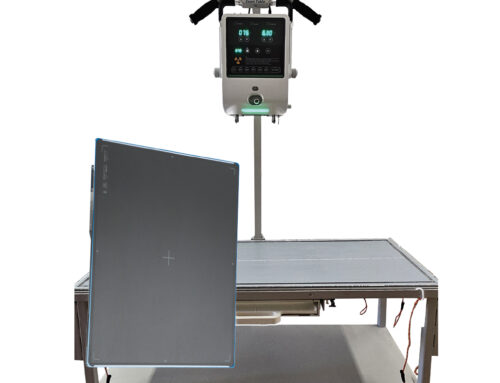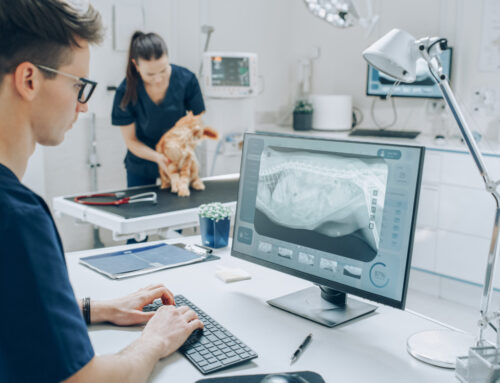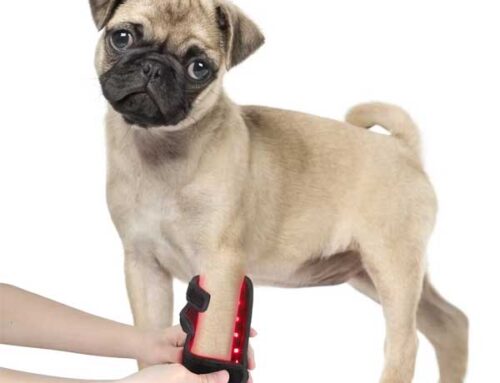When
your vet suggests an x-ray examination for your dog, you will probably have
some questions and concerns. Your vet is the best person to answer your
questions; however it is a good idea for dog owners to get a basic
understanding of this very important diagnostic procedure.
your vet suggests an x-ray examination for your dog, you will probably have
some questions and concerns. Your vet is the best person to answer your
questions; however it is a good idea for dog owners to get a basic
understanding of this very important diagnostic procedure.
What can x-rays do?
X-rays
are one of the most basic diagnostic tools at your vet’s disposal and even the
very smallest of practices will have their own x-ray machine and staff
qualified to use it. It is often veterinary technicians rather than vets that
perform and develop the x-rays. However, the images are always examined by the
vet for diagnosis.
are one of the most basic diagnostic tools at your vet’s disposal and even the
very smallest of practices will have their own x-ray machine and staff
qualified to use it. It is often veterinary technicians rather than vets that
perform and develop the x-rays. However, the images are always examined by the
vet for diagnosis.
X-rays
are a fast way to see internal problems, and can be used in a variety of
circumstances. In some cases, other examination tools can be more valuable,
such as in cases where soft tissue needs to be examined, as this does not
always show up well on x-rays.
are a fast way to see internal problems, and can be used in a variety of
circumstances. In some cases, other examination tools can be more valuable,
such as in cases where soft tissue needs to be examined, as this does not
always show up well on x-rays.
As
a rule, x-rays can provide shots of bone, foreign bodies, internal organs and
tissue. In some cases they may be used to detect tumors or other abnormal
growths, and the spread of cancers. X-rays are not fool-proof, and some tumors
may be virtually invisible to x-ray if they blend in with the tissue of the
body. Plastic will not show up well on x-rays, meaning that foreign bodies of
this type may go unnoticed.
a rule, x-rays can provide shots of bone, foreign bodies, internal organs and
tissue. In some cases they may be used to detect tumors or other abnormal
growths, and the spread of cancers. X-rays are not fool-proof, and some tumors
may be virtually invisible to x-ray if they blend in with the tissue of the
body. Plastic will not show up well on x-rays, meaning that foreign bodies of
this type may go unnoticed.
In
order to examine the internal structure of organs such as the heart or lungs,
MRI scanning or computer tomography are a better choice, and in some cases, a
barium test may be needed alongside of an x-ray.
order to examine the internal structure of organs such as the heart or lungs,
MRI scanning or computer tomography are a better choice, and in some cases, a
barium test may be needed alongside of an x-ray.
Are x-rays safe?
X-rays,
of course, generate radiation, which is something that can concern people. Too
much exposure to x-ray radiation can be harmful, which is why veterinary staff
need to limit their exposure to x-rays by means of lead tunics and masks. But what about your furry friend?
of course, generate radiation, which is something that can concern people. Too
much exposure to x-ray radiation can be harmful, which is why veterinary staff
need to limit their exposure to x-rays by means of lead tunics and masks. But what about your furry friend?
The
key to x-ray safety is limiting exposure. One x-ray, or a carefully controlled
series of repeated x-rays are safe for your dog, and even used sometimes to
scan pregnant bitches. Your vet should keep a record of your dog’s x-ray
history to ensure that their exposure remains within safe levels. Used in moderation and only when needed,
x-rays are not a health risk for your dog.
key to x-ray safety is limiting exposure. One x-ray, or a carefully controlled
series of repeated x-rays are safe for your dog, and even used sometimes to
scan pregnant bitches. Your vet should keep a record of your dog’s x-ray
history to ensure that their exposure remains within safe levels. Used in moderation and only when needed,
x-rays are not a health risk for your dog.
Does the dog need to be unconscious for an
x-ray?
x-ray?
Whether
or not your dog needs to be sedated for their x-ray depends on a number of
things. The size and shape of your dog, the area that needs to be examined and
how cooperative your dog is will all contribute! For some dogs that will keep still in one
position for their x-ray, sedation may not be needed. But for dogs that squirm
a lot, won’t stay in one place, or that need to be placed in an odd position
for their x-ray, sedation may be required.
or not your dog needs to be sedated for their x-ray depends on a number of
things. The size and shape of your dog, the area that needs to be examined and
how cooperative your dog is will all contribute! For some dogs that will keep still in one
position for their x-ray, sedation may not be needed. But for dogs that squirm
a lot, won’t stay in one place, or that need to be placed in an odd position
for their x-ray, sedation may be required.
What determines the cost of canine x-rays?
There
is no simple formula to determine the cost of an x-ray exam; every examination
is different, and prices can vary between different practices, locations, etc.
is no simple formula to determine the cost of an x-ray exam; every examination
is different, and prices can vary between different practices, locations, etc.
Some
of the factors that determine price include how many images need to be taken to
get the right shot, and how easy or difficult it is to arrange. It may mean
that just one vet tech is needed to complete the procedure and attain one
image, or several staff may be needed to help with positioning, angling and keeping
your dog still.
of the factors that determine price include how many images need to be taken to
get the right shot, and how easy or difficult it is to arrange. It may mean
that just one vet tech is needed to complete the procedure and attain one
image, or several staff may be needed to help with positioning, angling and keeping
your dog still.
Sedation
is an added cost. Something overlooked by
pet owners–the fee does not just cover the process of getting the image
itself, but the assessment of the image and what it shows. Second opinions, the
opinions of a specialist and other considerations are also factored into the
cost if needed.
is an added cost. Something overlooked by
pet owners–the fee does not just cover the process of getting the image
itself, but the assessment of the image and what it shows. Second opinions, the
opinions of a specialist and other considerations are also factored into the
cost if needed.
Your
vet should be able to explain to you in advance their pricing structure for
x-rays, and how their ultimate fee is reached.
vet should be able to explain to you in advance their pricing structure for
x-rays, and how their ultimate fee is reached.
***
This
blog is brought to you by Diagnostic Imaging Systems. Diagnostic Imaging Systems, Inc. (DIS) has been providing Quality Imaging products since
1983. The company combines industry knowledge with an understanding of the
veterinary practice. For more information, go to Diagnostic Imaging Systems,
Inc. website at: www.vetxray.com
blog is brought to you by Diagnostic Imaging Systems. Diagnostic Imaging Systems, Inc. (DIS) has been providing Quality Imaging products since
1983. The company combines industry knowledge with an understanding of the
veterinary practice. For more information, go to Diagnostic Imaging Systems,
Inc. website at: www.vetxray.com
All
content provided on this blog is for informational purposes only. The owner of
this blog makes no representations as to the accuracy or completeness of any
information on this site or found by following any link on this site. The owner
will not be liable for any errors or omissions in this information nor for the
availability of this information. The owner will not be liable for any losses,
injuries, or damages from the display or use of this information. These terms
and conditions of use are subject to change at any time and without notice.






